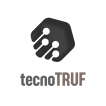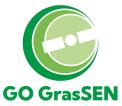
BOVIEX 4.0 Operational Group: Technological improvement in extensive cattle production in Spain
- Type Operational group
- Status Filled
- Execution 2022 -2025
- Assigned Budget 598.672,43 €
- Scope Supraautonómico
- Autonomous community Aragón; Asturias, Principado de; Cantabria; Castilla y León; Castilla - La Mancha; Extremadura; Madrid, Comunidad de; País Vasco; Rioja, La
- Main source of financing CAP 2014-2020
- Project website GO BOVIEX 4.0
Description
The objective is to develop a business intelligence tool for monitoring, managing, and supporting decision-making in extensive cattle farms to improve profitability and the production environment.
Objectives
- Develop a decision-making support tool for livestock farmers aimed at improving livestock profitability parameters.
- Integrate information from databases and record books of livestock farmers and associations into the tool to help develop new visualization and analysis tools for the use of the environment and available forage.
- Development of multiprotocol communication gateways that allow the transmission of information from different sensors installed in animals or on the farm to the Internet
- Optimizing land use through the combined use of satellite imagery and GPS collars
- The objective was to define the key indices and metrics needed to optimize decision-making and farm management. The results are management, digitalization, and welfare surveys conducted on the study farms, which generated an index report and an analysis of the impact of each parameter on ease of management, along with a list of key indicators and percentage parameters of variation within the platform design. This knowledge provides farmers with a practical tool to compare their situation with the industry average, improve the efficiency of their processes, optimize resource use, and move toward a more digitalized management system focused on animal welfare. Implementing these results can lead to increased productivity, cost reduction, and more accurate and informed decision-making.
- The objective was to develop a business intelligence platform for livestock farm management. The result is the development of a livestock management platform with the proposed functionalities and the link to access the verification platform. This facilitates the farmer's daily work, saving them time on management tasks and providing them with insight into the current status of their livestock. By reducing the time spent on management, this extra time can be used for other activities that benefit their economy or complement livestock farming.
- The objective is to identify alert needs proposed by farmers and technicians for the generation of notifications and recommendations. The result is a description of critical points and associated values in management parameters, their integration into the web platform, and the combination of variables. This alert and notification system helps farmers manage and make better decisions in real time, even when they are not physically present on the farm. This enables more efficient livestock management and early and effective problem resolution through faster decision-making.
- The objective was to promote the incorporation of new complementary technologies to extensive grazing and to analyze the specificities necessary to adapt the proposed technology to a greater number of breeds and species in the future. The result has been the various dissemination activities carried out within the project, especially oral presentations at conferences and courses to promote the project and the importance of the results obtained. Furthermore, the optimization percentage for the analyzed variables has been defined. Through all the events held, both in person and online, the project has been shared with a wide range of Spanish livestock breeds, mostly from extensive production systems. These events were also open to all types of farmers, making them accessible to those who raise animals in extensive conditions for commercial purposes, such as the production of F1 or crossbred calves. This provides benefits to the entire extensive beef cattle sector.
- The goal was to develop multi-protocol communication gateways to maximize coverage and monitor livestock. The result was a report on livestock tracking and their interaction with the land, as well as the integration of this tracking into the Business Intelligence tool. This gives farmers a clear advantage: knowing where their animals are at all times. This significantly reduces the time spent searching for livestock, allowing them to focus on other activities that can increase farm profitability. Furthermore, the tool improves interaction with the land, as farmers can see in real time how much time the animals spend grazing in each area. This allows for early decisions, such as moving animals to another plot or determining where they should graze to avoid overgrazing in areas where animals spend more time than recommended, all from their mobile phone.
- The objective was to establish forage production indices and link them to livestock movement. The result was a report with the main indices analyzed and their linkage on the satellite imagery web platform with the NDVI data for the studied plots. This was the most innovative objective, since until now, the use of NDVI through satellite measurements had not been applied in extensive livestock farming. With this project, we have perfected the technique, and it will now be available to any livestock farmer who wishes to use it. This tool provides a wealth of information and value to livestock farmers, offering a near-real-time view of the state of their pastures. This is extremely useful for rotational grazing planning and, in conjunction with good pasture management, can lead to significant savings in external inputs.
- The objective was to characterize the variability and biomass production potential of farms by developing maps of management zones and NDVI evolution. The result was a guide with recommendations for the production management plan and maps of forage productivity and NDVI, associated with livestock movements and behavior. With these guidelines, farmers will not only have access to NDVI data for their plots, but will also receive grazing recommendations. This allows them to make informed decisions directly in the field and justify pasture changes using real satellite data. Furthermore, it provides administrative-level documentation to verify where animals have been grazing, for how long, and to which plot it is best to move them depending on pasture conditions. This provides farmers with valuable knowledge previously only acquired through experience, while saving significant time in pasture management and reducing the need for external inputs. With more efficient land use and lower input costs, overall production becomes more profitable.
- The objective was to communicate information about the working group and the project to the industry and the general public. The result was the definition of a working group and a communication structure using available tools. A working group website was designed, developed, and improved to disseminate the group's objectives and results, as well as all the activities carried out during its existence. Furthermore, all related news was published on the websites of participating members, as well as on their social media channels, to reach the entire target audience. With this objective, and with all this information available on open websites, any breeder has been able to access relevant project information.
- The objective was to establish mechanisms to disseminate the project's results to all end users (livestock farmers, ranchers, associations, researchers, veterinarians, laboratories, etc.). The results have focused, on the one hand, on the design, development, and distribution of informational materials about the working group and its results among industry professionals at the various trade shows, conferences, and related events attended by group members. Furthermore, the operational group's staff has also given oral presentations at various specialized industry conferences and trade shows. This project has also been disseminated among industry professionals so they can recommend it to the livestock farmers they work with. This project has also been disseminated in neighboring countries, such as France and Portugal, with the aim of reaching as many livestock farmers as possible so they can benefit from these innovations.
Results
- Development of a Business Intelligence platform for managing livestock farms
- Identification of alert needs proposed by livestock farmers and technicians for the generation of notifications. Promotion of the incorporation of new technologies complementary to extensive grazing.
- Development of multiprotocol communications gateways to maximize coverage and monitor livestock
- Characterization of the variability and biomass production potential of farms by developing maps of management zones and NDVI evolution
Contact information
- Coordinator/entity name: FEAGA
- Coordinator/entity email: feagas@feagas.es
Beneficiaries
- Federación española de Asociaciones de ganado selecto (FEAGAS)
- Asociación española de criadores de ganado vacuno de raza asturiana de los valles
- Asociación española de criadores de ganado vacuno selecto de raza avileña-negra ibérica (AECRANI)
- Digitanimal SL
Outsourced
- Esmedagro SL
- Instituto Madrileño de Investigación y Desarrollo Rural Agrario y alimentario (IMIDRA)
- Comercializadora de vacuno selecto avileño negro ibérico
- Agrisat Iberia SL





